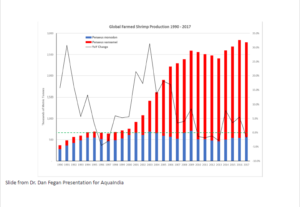
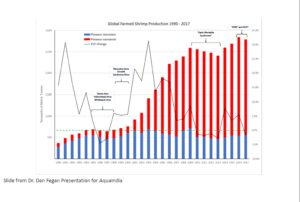

Key Changes and Megatrends in Shrimp Farming
• Impact of disease on global production patterns
• Change in farmed species
• Change in global production patterns
• Switch to domesticated and genetically selected stocks; SPF and SPR
• Emergence of China as a global importer (Thailand and Brazil develop internal markets)
• Continued growth fuelled by increasing demand
• Industry consolidation and integration
• Move towards increased control of production variables. Development of hyper-intensive farming methods
• Increasing impact of domestication and genetics
• Increased importance of health management
• Increased R&D to make better feeds
• Increased awareness of environmental and social sustainability issues
• Move towards differentiated and value-added products
GENETIC IMPROVEMENT OF SHRIMP
• Genetic improvement has already generated large gains in shrimp
• Practically all gains due to traditional selective breeding
• Growth has gone from 1 g/wk to 2.5 g/wk in 20 years
• Gains for disease resistance have been more difficult
• Genomics-aided programs will start bearing fruit very soon
• Large animal-genetics companies moving into the shrimp space
• Genetic marker assisted selection is a very powerful tool and now a reality
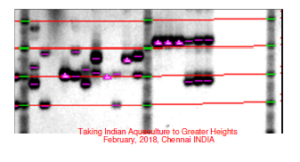
PRINCIPAL TRAITS OF INTEREST TO SHRIMP FARMERS
• Fast growth
• General survivability
• Reproductive fitness
• Disease resistance
• Feed conversion
• Dressing percentage
• Others

THE CASE OF ECUADOR
• Semi-intensive production system; stocking at 7-10 shrimp/m2
• 220,000 Ha in production yield 500,000 MT/yr = 2.3 MT/Ha
• Disease management through use of low densities, low stress
• Host and pathogens tend to coexist in equilibrium, similar to nature
• A fertile ground for selecting disease resistance
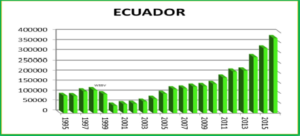
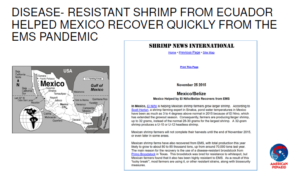
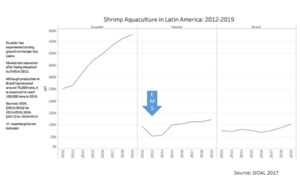
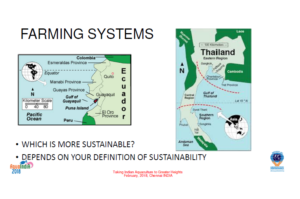
Sustainability
• Capacity to persist while maintaining environmental well being
• Sustainable development is development that meets the needs of the present without compromising the
ability of future generations to meet their own needs (UN’s Bruntland Commission)
• Social, Environmental, Economic. The 3 P’s: people, planet, profit.
• Total capital stays constant over time within the system
• “What is legal is sustainable”
• “Consistent and predictable production over time” Inherit my business to grandchildren
• Choose best alternatives
• Resource efficiency

Efficiencies of Different Animals
Feed and freshwater required to produce 1 Kg of meat

Aquaculture is one of the most efficient forms of animal production
• Habitat destruction/degradation: estuarine and terrestrial
• Water discharges: concentrated suspended solids and organic matter
• Use of Fish meal/oil in feeds
• Shrimp disease translocation
• Use of energy

The Future of Environmental Sustainability in Aquaculture
• Better feeds: physical, nutritional, environmental
• Increasing substitution of fish meal/oil. Use of byproducts
• Replacement of agrochemicals with soft technologies
• Better criteria and techniques for farm site selection
• Multi-trophic and integrated systems
• Trash into cash
• Better recirculation systems (RAS)
• Improved farming systems
• Improved genetics
• Production moves closer to demand centers
Source: Society of Aquaculture Professionals (SAP)
